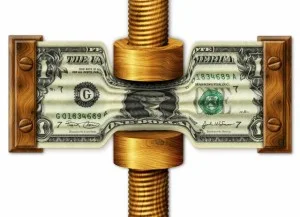The NASDAQ Bubble
Looking back, one can recall that the big capitalization technology stocks which controlled the NASDAQwere wildly overrated by out-dated measures. The Wall Street Journal had published on March 14, 2000, a prominent article - `Big Cap Tech Stocks are a Sucker Bet’. This article was contributedby the Wharton School finance professor and fellow Kiplinger’s columnist, Jeremy Siegel. He was of the opinion that `several investors of present time are undisturbed by history and by the failure of any large cap stock ever to justify, by its subsequent record, a (price-earnings) ratio anywhere near 100’.
Bubble is a change and the nature of bubbles is that no one can predict when they could pop. If Nasdaq seemed to be overvalued in 2000, it was also overvalued in 1999 as well as 1998 and 1997. This resulted in investors rushing to buy stocks in late 1990s with the intention of not missing out on profits which their colleagues would be making. Most of the buyers overloaded their portfolios with big cap tech stocks with the belief that they could later sell to make a profit.
Education from the NASDAQ Bubble
Three of the most valuable education from NASDAQ bubble -
Most of the investors unfortunately turn to the stock market as a place where they could raise their profit and improve their financial status. In their eagerness to reach high, the risk factor is often overlook and sometimes ends in disaster. Caution needs to be exercised in every plan of investment to earn the fruits of a good labour.
Education from the NASDAQ Bubble
Three of the most valuable education from NASDAQ bubble -
- Diversification - The main lesson from Nasdaq COMP, -0.63% bubble was diversification. Having ones’ savings in one high beta sector of financial markets would give rise to substantial risk of long lasting loss. Though the NASDAQ took fifteen years to break, an investor owning a 60%/40%stock/bond portfolio beginning on March 1, 2000 was at risk for less than four years. Besides, while NASDAQ was scrabbling its way back to break even, one generated an annualized return of 5.5% though not bad at buying while it was at its peak
- Price compression creates tail risk–Investors get involved in years’ worth of future returns into a very short time period. If the underlying entity does not give the actual value which it was priced in, this would give rise to disequilibrium. In other words, you would get investors who priced in high growth that does not seem to be profitable. When understanding dawns, the price decompresses and the bigger the compression, bigger is the decompression. As the Nasdaq bubble tend to get expanded, investors were looking forward to gain profits of the Internet, pricing in years’ worth of profits in a very short span of time. This means that they priced in a 15 years value of profit in a few years. When one fails to diversify accurately, one could be exposed to their savings being at risk. They should allocate their savings accurately to avoid being exposed to huge risk to their portfolio.
- Avoid chasing the next hot thing for maximizing returns –If one intending in maximising the primary source of income and allocating some of the income in, with the intention of planning for the future, proper allocation of saving is essential. The purpose of savings is not actual return maximization; on the contrary, return maximization within the boundaries of suitable risk taking. If one is a real saver on the lookout for stability, then the main portfolio goal is not simply a protection against purchasing power loss but the risk of long lasting loss. This means that it could be probably unwise to overweight the portfolio in favour of purchasing power protection.
Conclusion
Most of the investors unfortunately turn to the stock market as a place where they could raise their profit and improve their financial status. In their eagerness to reach high, the risk factor is often overlook and sometimes ends in disaster. Caution needs to be exercised in every plan of investment to earn the fruits of a good labour.




